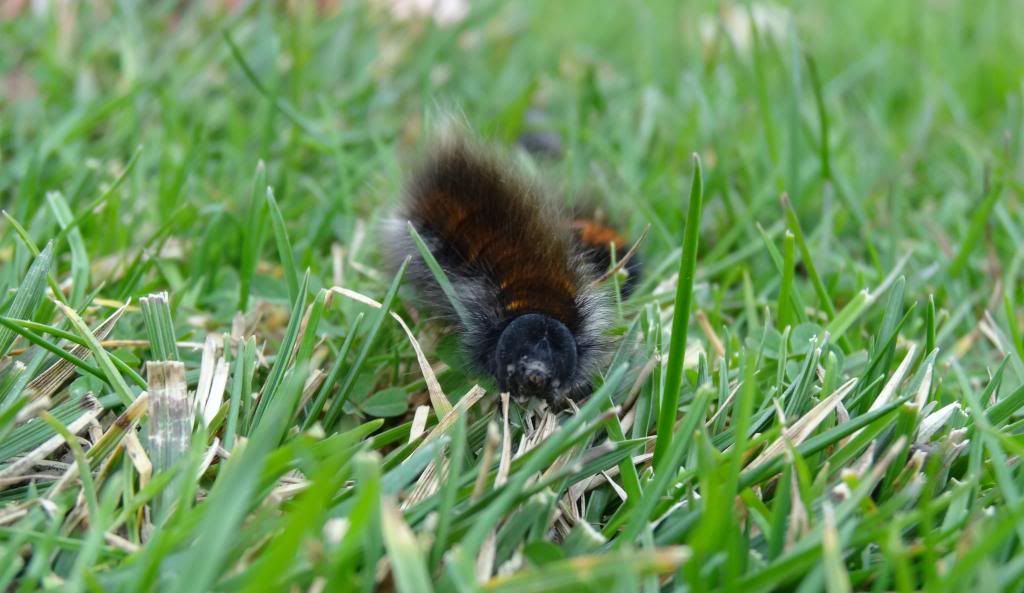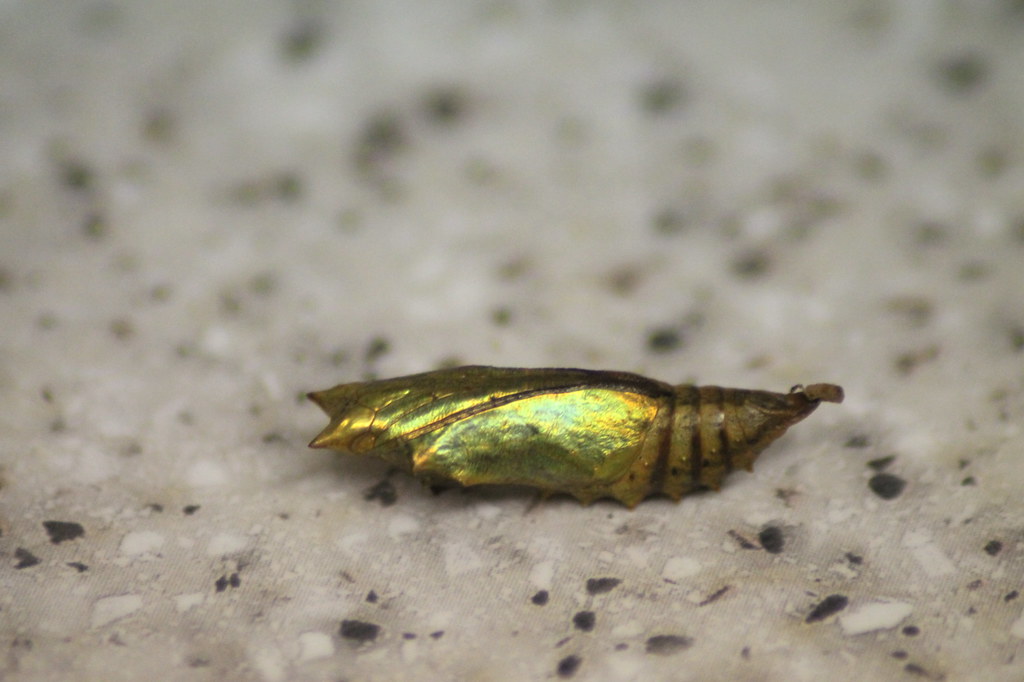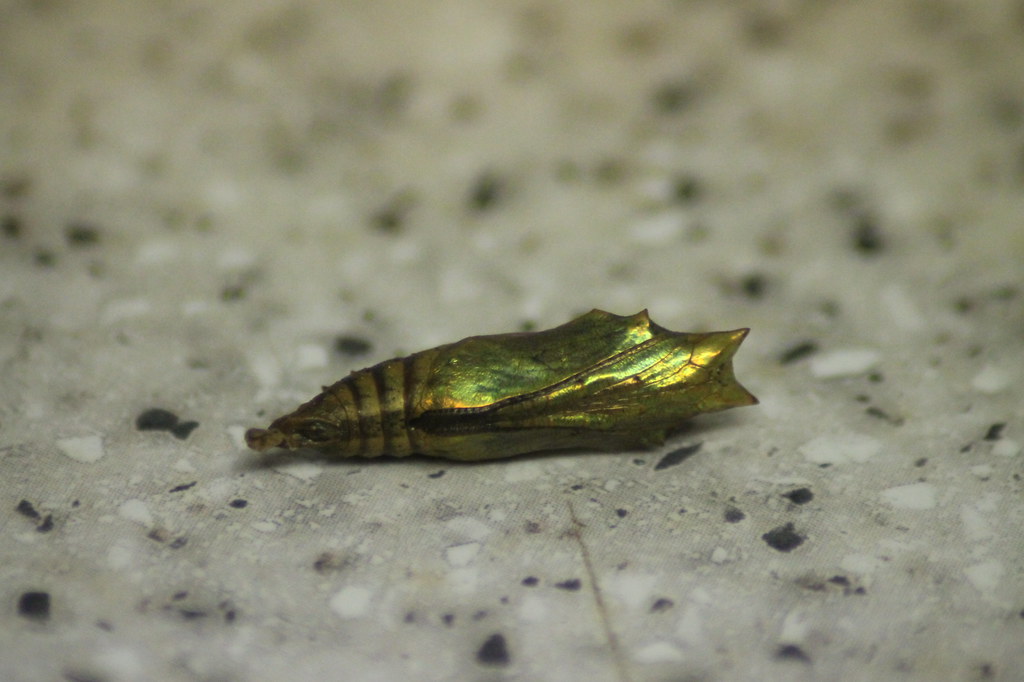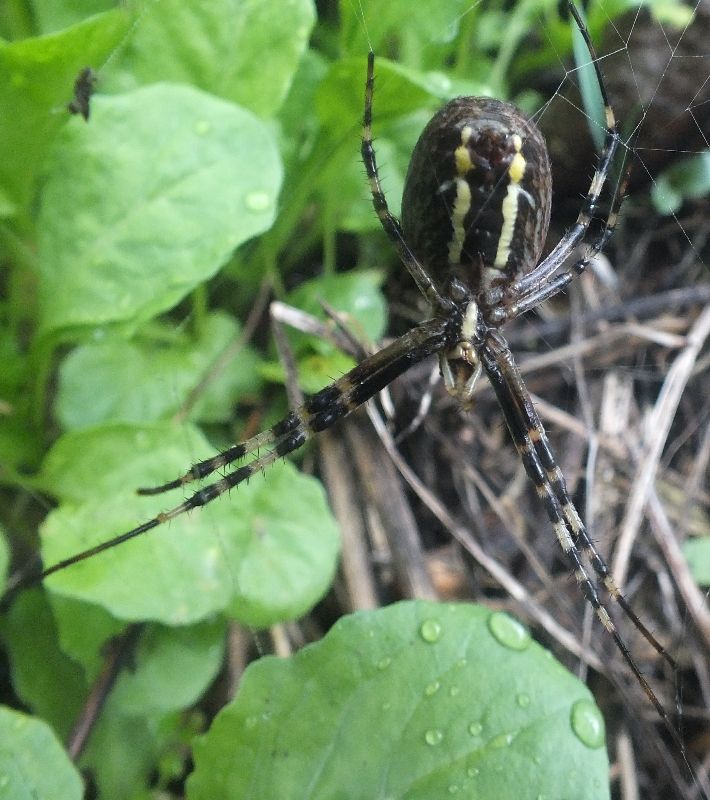The "What is this bug?" thread
- Thread starter Harvestman
- Start date
-
Come along to the amazing Summer Moot (21st July - 2nd August), a festival of bushcrafting and camping in a beautiful woodland PLEASE CLICK HERE for more information.
You are using an out of date browser. It may not display this or other websites correctly.
You should upgrade or use an alternative browser.
You should upgrade or use an alternative browser.

Came across this beastie, anyone ID it for me?
My best guess from google was Fox Moth caterpillar?
Fox moth is my conclusion too.
I live in a cabin-like buidling next to our family house. Where I live is on a half mile stretch of farms in between 2 big towns. It was climbing up the glass on my door on the outside.
I wish I would have put it in a container now, because I didn't know it would be a mystery :O
I wish I would have put it in a container now, because I didn't know it would be a mystery :O
I live in a cabin-like buidling next to our family house. Where I live is on a half mile stretch of farms in between 2 big towns. It was climbing up the glass on my door on the outside.
I wish I would have put it in a container now, because I didn't know it would be a mystery :O
And this was in the vicinity of Manchester?
The little beastie near your hoody is actually a ladybird larvae which are veracious little blighters and eat garden pests including aphids which they munch away on given the chance. The larvae go through 4 instars during its life before coming an adult, in other words its sheds its skin as it grows.
JohnClayton
JohnClayton
The hairy beastie on your lawn in Manchester is actually a Garden Tiger Moth caterpillar (Arctia caja) which were common at one time but now protected and I actually saw a couple last week crossing the road on Longridge fell in Lancashire near where I live, it can grow to 2.4ins [6cm] and can play dead when threatened.[It was known at one time as the woolly bear caterpillar]. Beware if you pick one up as it can shed its hair which are an irritant to predators and fingers as well
The caterpillar is especially fond of eating non woody plants such as raspberry, blackberry, viburnum, honeysuckle, erica, and broom. The adult moth which can have a wingspan of up to 6.5cm likes damp places such as gardens, parks and river banks and has conspicuous red and black hind wings which it shows when threatened and apparently tastes extremely unpleasant.
JohnClayton
The caterpillar is especially fond of eating non woody plants such as raspberry, blackberry, viburnum, honeysuckle, erica, and broom. The adult moth which can have a wingspan of up to 6.5cm likes damp places such as gardens, parks and river banks and has conspicuous red and black hind wings which it shows when threatened and apparently tastes extremely unpleasant.
JohnClayton
What is this bug? Humbug!
(Still utterly no idea about Ash Blue's unearthly alien bug though)
Someone's posted on the youtube video saying it's the larvae of a case-bearing leaf beetle and that case is made up of it's own faeces!
Someone's posted on the youtube video saying it's the larvae of a case-bearing leaf beetle and that case is made up of it's own faeces!
Brilliant! Always great to learn something. What a great thing.
Brilliant! Always great to learn something. What a great thing.
It's got to be a pretty good defense mechanism.... who want's to eat a lump of poo!
It's got to be a pretty good defense mechanism.... who want's to eat a lump of poo!
Slugs of course. Someone has to clean up the mess. That's what they are for...
Quick question for Harvestman.
Why is it at this time of year that I end up covered in spider web when just walking the dog? There seems to be oodles of the stuff about in fields in the garden. I spend half my dog walk trying to get it out of my fact and spitting web.
Why is it at this time of year that I end up covered in spider web when just walking the dog? There seems to be oodles of the stuff about in fields in the garden. I spend half my dog walk trying to get it out of my fact and spitting web.
Quick question for Harvestman.
Why is it at this time of year that I end up covered in spider web when just walking the dog? There seems to be oodles of the stuff about in fields in the garden. I spend half my dog walk trying to get it out of my fact and spitting web.
Reply from Harvestman.
Because at this time of year there large orb weavers (garden spider, 4 spot spider and the like) are all at their largest, so their webs are larger too. The webs are to capture flying insects so are higher and more exposed than webs at other times of year.
Also the juvenile spiders take advantage of sunny days to pay out silk into rising thermals to get lift. Then they let go and drift away as a dispersal technique. they can pay out several dozen metres of silk at a time, or more.
So, there's a lot of silk out there right now.
Of course, you could also try looking where you are going...
Going to post one of my own now. I was given this chrysalis yesterday, and asked what it is. I haven't the foggiest. It is empty, and I have half a suspicion that the colour is due to something involved in the breakdown of the shell rather than being the natural chrysalis colour. Anyway, it looks nice.




Lovely colours in that chrysalis Harvestman 
So, my question to you is...
[edit]Common Orb-weaver? Meta (Metellina) segmentata[/edit]
Have I found a false widow in my house... or am I way off !!!
Either way, he/she has been safely relocated to a new home in the garden.

So, my question to you is...
[edit]Common Orb-weaver? Meta (Metellina) segmentata[/edit]
Have I found a false widow in my house... or am I way off !!!
Either way, he/she has been safely relocated to a new home in the garden.

Last edited:
That's Metellina, probably segmentata. Extremely variable in appearance, but there are several ways to tell it from the false widow spiders (genus Steatoda).
1. Metellina is much smaller.
2. Metellina has much spinier legs, and the front legs are always very long
3. The abdomen of Steatoda is always glossy and shiny, regardless of the pattern
4. Metellina has a mark on the carapace like a letter Y, or a tuning fork (you can see in the picture that the carapace is two-coloured). Steatoda never has this mark, and the carapace is always entirely dark.
Metellina is probably the commonest spider in the UK, but because it is so variable it is sometimes one of the most difficult to recognise. Just when you think you have it worked out you find one that looks completely different. Even now I get ones that make me hesitate and look closer. The one is your picture is unusually dramatically marked, which is why you might have confused it.
1. Metellina is much smaller.
2. Metellina has much spinier legs, and the front legs are always very long
3. The abdomen of Steatoda is always glossy and shiny, regardless of the pattern
4. Metellina has a mark on the carapace like a letter Y, or a tuning fork (you can see in the picture that the carapace is two-coloured). Steatoda never has this mark, and the carapace is always entirely dark.
Metellina is probably the commonest spider in the UK, but because it is so variable it is sometimes one of the most difficult to recognise. Just when you think you have it worked out you find one that looks completely different. Even now I get ones that make me hesitate and look closer. The one is your picture is unusually dramatically marked, which is why you might have confused it.
That's Metellina, probably segmentata. Extremely variable in appearance, but there are several ways to tell it from the false widow spiders (genus Steatoda).
1. Metellina is much smaller.
2. Metellina has much spinier legs, and the front legs are always very long
3. The abdomen of Steatoda is always glossy and shiny, regardless of the pattern
4. Metellina has a mark on the carapace like a letter Y, or a tuning fork (you can see in the picture that the carapace is two-coloured). Steatoda never has this mark, and the carapace is always entirely dark.
Metellina is probably the commonest spider in the UK, but because it is so variable it is sometimes one of the most difficult to recognise. Just when you think you have it worked out you find one that looks completely different. Even now I get ones that make me hesitate and look closer. The one is your picture is unusually dramatically marked, which is why you might have confused it.
Pretty pleased with that then, didn't too too badly once I'd got over the initial excitement of seeing a somewhere white and black 'skull-like' pattern on it's back that has been spewed across the media of late. I started to notice the caralace of my spider was whiter near the legs and the legs where increasingly less hairy that the images of the Steatodas I found.
Last edited:
Pretty good observation. Nice to see someone looking closely.
It should be noted that there are actually several species of False Widows, genus Steatoda in Britain, most of which are native, and several of which can bite humans. The one causing the hysteria is S. nobilis, which is the largest of the genus found in the UK, and which probably originates in the Canary islands. Even so, it has been turning up in the UK for years, and is well established.
20 years ago the same hysteria surrounded S. grossa, which is slightly smaller, but that has been in the UK for ages, and is at least naturalised, if not actually native. Ironically, in continental Europe, Steatoda grossa is regarded as a predator of the true Black Widow, Lactrodectus sp.
It should be noted that there are actually several species of False Widows, genus Steatoda in Britain, most of which are native, and several of which can bite humans. The one causing the hysteria is S. nobilis, which is the largest of the genus found in the UK, and which probably originates in the Canary islands. Even so, it has been turning up in the UK for years, and is well established.
20 years ago the same hysteria surrounded S. grossa, which is slightly smaller, but that has been in the UK for ages, and is at least naturalised, if not actually native. Ironically, in continental Europe, Steatoda grossa is regarded as a predator of the true Black Widow, Lactrodectus sp.
Similar threads
- Replies
- 58
- Views
- 6K
- Replies
- 0
- Views
- 655
- Replies
- 2K
- Views
- 343K


